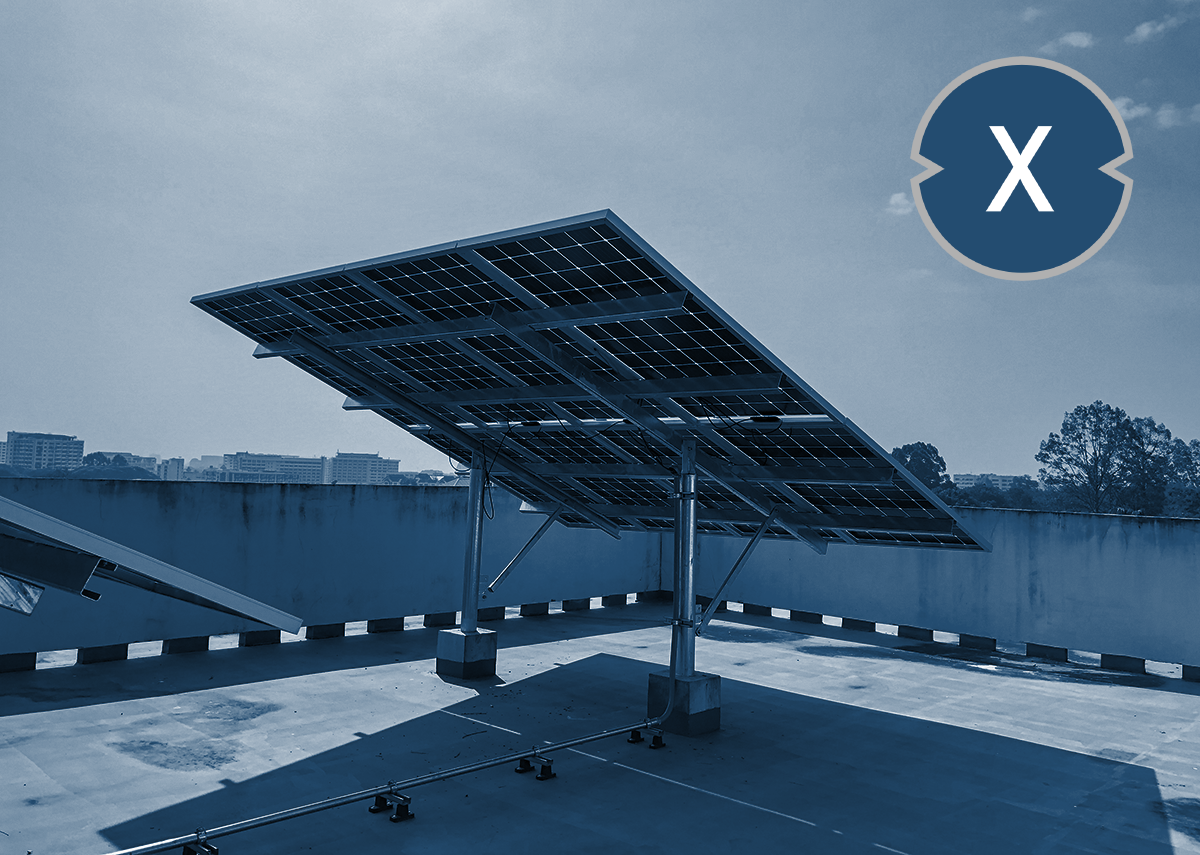Bifacial technology for increased performance
Regardless of whether N-type or P-type solar cells are used (more on this below), there is a way to significantly increase the efficiency of solar modules. This is bifacial technology. Unlike monofacial solar cells, which only generate PV power when their top surface is illuminated, bifacial solar cells are designed to generate power from both their top and bottom surfaces. The increased light absorption achieved in this way considerably improves the module's efficiency.
Of course, the efficiency on the bottom is not as great as on the top, which is oriented toward sunlight. Nevertheless, the efficiency can increase by more than 19% due to the radiation on the underside, depending on the location, distance from the ground and external conditions. This means that the capacity of the entire system can be increased by between 10 and 30. For example, the performance of a module that previously delivered 290 Wp increases to 320 to 360 Wp.
When installing bifacial systems, care must be taken to ensure that they are installed at a sufficient distance from the surface underneath to allow for additional radiation. The minimum distance should be at least 40 centimeters for weakly to medium reflective surfaces such as a tiled roof or grass. However, for highly reflective surfaces (e.g. snow), the distance to the ground should be greater than 1.5 meters.
The subtle difference: P-type and N-type solar cells
In PV technology, even the smallest discrepancies in chemical composition are responsible for large differences in efficiency and economic distribution. This can be seen, for example, when comparing P-type and N-type solar cells. Both differ in terms of their cell structure, with P-type solar cells based on being built on a positively charged silicon base. In contrast, type N solar cells are designed the other way around, because the negatively doped side serves as the base of the solar cell.
Although the first solar cell developed in the USA in 1954 was one of the N type, the P-Type cell prevailed in the following years. The reason for this was that the modules were mainly used in space travel in the early days, where they had turned out to be more resistant. It was only in recent years that the manufacturers of the solar cells be a rethink, which is due to the larger performance of the N-Type cells. The longer lifespan of these cells is responsible for this, because in contrast to the P-Type, they are not threatened by the “boron oxygen defect”. With increasing operational time, this leads to damage to efficiency. In addition, solar cells from the N-type are less susceptible to metallic contamination of silicon.
However, N-type solar cells are currently more expensive to produce, due to the decades-long focus on P-type cells. Their production led to economies of scale in the value chain, which first have to be built up in N-type production. In addition, additional steps are required in the production of N-type solar modules, which further increases costs. However, due to their higher efficiency, the share of N-type is continuously increasing and it will only be a matter of time before it replaces P-type as the dominant solar cell technology.
Glass-glass / double-glazed modules
In the glass module with bifacial cell technology, light is captured on both the front and back of the module. Increasing the amount of light captured increases the module's efficiency.
Suitable for:
Solar modules: Bifacial/bifacial modules for more efficiency and increased luminous efficacy – advice, planning & solutions
Bifacial solar cells have a broader application perspective due to their bifacial generation capacity and higher system efficiency, and are particularly suitable for areas with more snow and distributed generation systems such as roofs, open spaces, fences and noise barriers.
The cell backside efficiency can reach more than 19%, and the incident backlights can be used to improve the generation capacity of the system, with the unit area capacity increase up to 10%~30%.
More about it here:
📣 Solar modules and photovoltaic solutions (roofs, open spaces such as solar carport systems) for industry, retail and municipalities
Everything from a single source, specially designed for solar solutions for large parking areas. You refinance or counterfinance into the future with your own electricity generation.
🎯 For solar engineers, plumbers, electricians and roofers
Advice and planning including a non-binding cost estimate. We bring you together with strong photovoltaic partners.
👨🏻 👩🏻 👴🏻 👵🏻 For private households
We are positioned across regions in German-speaking countries. We have reliable partners who advise you and implement your wishes.
- Plan solar or solar systems on warehouses, commercial halls and industrial halls
- Industrial plant: Plan a solar open-air system or open-space system
- Plan photovoltaic systems with solar solutions for freight forwarding and contract logistics
- B2B photovoltaic systems and solar solutions & advice
The right solar modules for your solar system: Xpert.Solar for planning and advice in the area of photovoltaic carports, photovoltaic systems on roofs and solar systems in general. We also support you in finding the right and suitable photovoltaic solar modules!
I would be happy to serve as your personal advisor.
You can contact me by filling out the contact form below or simply call me on +49 89 89 674 804 .
I'm looking forward to our joint project.
Xpert.Digital – Konrad Wolfenstein
Xpert.Digital is a hub for industry with a focus on digitalization, mechanical engineering, logistics/intralogistics and photovoltaics.
With our 360° business development solution, we support well-known companies from new business to after sales.
Market intelligence, smarketing, marketing automation, content development, PR, mail campaigns, personalized social media and lead nurturing are part of our digital tools.
You can find out more at: www.xpert.digital – www.xpert.solar – www.xpert.plus


